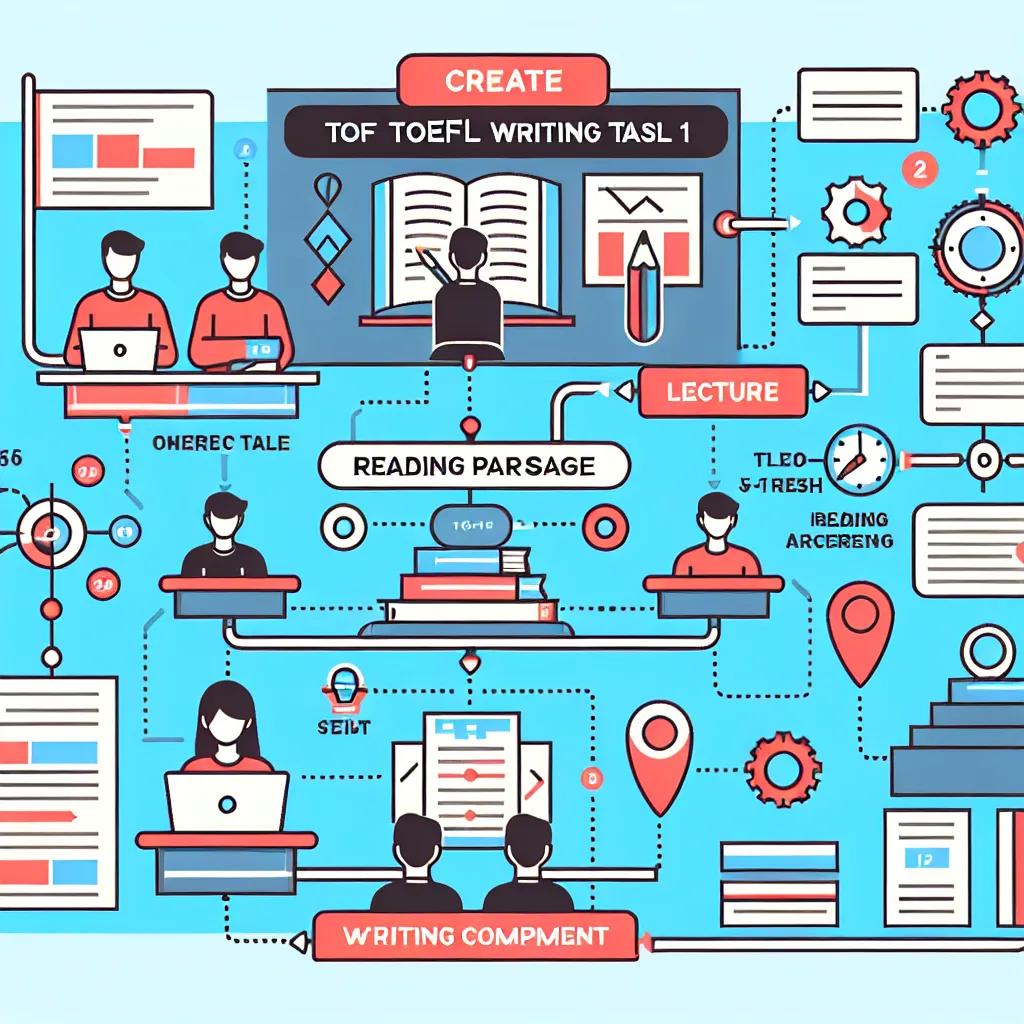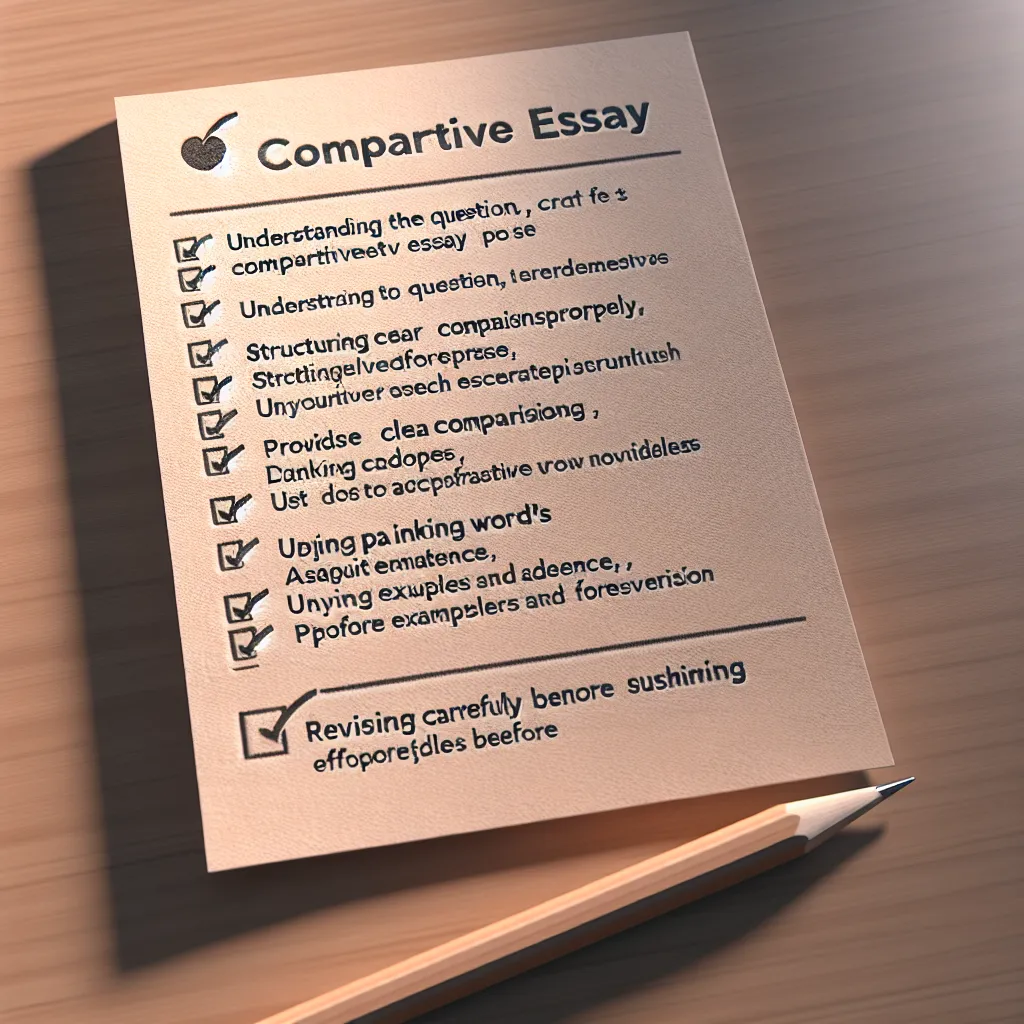Writing a comparison in TOEFL Writing Task 1 is a crucial skill that can significantly impact your overall score. This guide will provide you with expert strategies and practical tips to excel in this task, helping you achieve your desired TOEFL score.
Understanding TOEFL Writing Task 1
TOEFL Writing Task 1, also known as the Integrated Writing task, requires test-takers to read a short passage, listen to a lecture on the same topic, and then write a comparison of the main points presented in both sources. This task assesses your ability to synthesize information from different sources and present it coherently in writing.
 TOEFL Writing Task 1 Overview
TOEFL Writing Task 1 Overview
Key Components of a Successful Comparison
1. Effective Note-Taking
Mastering note-taking is essential for success in TOEFL Writing Task 1. As you read the passage and listen to the lecture, jot down the main ideas and supporting details. Use abbreviations and symbols to save time and capture information efficiently.
2. Identifying Main Points
Focus on identifying the central arguments or claims in both the reading passage and the lecture. Usually, there are 2-3 main points that you need to compare and contrast.
3. Recognizing Relationships
Pay attention to how the lecture relates to the reading passage. The lecture typically presents contrasting viewpoints or additional information that challenges or supports the reading material.
Writing the Comparison Essay
1. Introduction
Start your essay with a brief introduction that summarizes the topic and mentions that you will be comparing information from the reading passage and the lecture.
Example:
“The reading passage and the lecture both discuss [topic]. While the reading presents [brief summary], the lecture offers [contrasting/supporting] viewpoints on the same subject.”
2. Body Paragraphs
Organize your body paragraphs around the main points you identified. For each point:
- State the main idea from the reading passage.
- Present the corresponding information from the lecture.
- Explain how they relate to each other (contrast, support, or provide additional information).
Use transition words to show the relationship between ideas:
- For contrasting ideas: “However,” “On the other hand,” “In contrast”
- For supporting ideas: “Similarly,” “Additionally,” “Furthermore”
Example:
“The reading passage states that [main point from reading]. However, the lecturer argues that [contrasting point from lecture]. This challenges the reading’s assertion by [explanation].”
3. Conclusion
Conclude your essay by summarizing the main differences or similarities between the reading passage and the lecture. Avoid introducing new information in the conclusion.
Tips for Effective Comparison Writing
-
Use clear language: Write in a straightforward manner, avoiding overly complex vocabulary or sentence structures.
-
Paraphrase, don’t quote: Use your own words to convey the information from both sources.
-
Balance information: Give equal attention to both the reading passage and the lecture in your essay.
-
Stay within the word limit: Aim for 280-300 words to ensure you’ve covered all necessary points without being overly verbose.
-
Practice time management: Allocate your 20 minutes wisely – spend about 3-5 minutes planning and the rest on writing and reviewing.
 TOEFL Writing Task 1 Tips
TOEFL Writing Task 1 Tips
Common Mistakes to Avoid
-
Focusing too much on one source: Ensure you give equal weight to both the reading passage and the lecture.
-
Inserting personal opinions: Stick to the information provided in the sources without adding your own views.
-
Neglecting to explain relationships: Don’t just list points from both sources; explain how they relate to each other.
-
Poor organization: Use a clear structure with an introduction, body paragraphs, and conclusion.
-
Inaccurate paraphrasing: Be careful not to change the meaning of the original information when putting it into your own words.
Practice Strategies
-
Use official TOEFL practice materials: ETS provides sample questions and responses that can help you understand the expectations for this task.
-
Time yourself: Practice writing comparisons within the 20-minute time limit to improve your speed and efficiency.
-
Record yourself: Practice summarizing lectures orally to improve your listening and note-taking skills.
-
Peer review: Exchange essays with study partners to get feedback and learn from each other’s strengths and weaknesses.
-
Analyze model essays: Study high-scoring sample essays to understand effective comparison techniques and structures.
Next Steps
Now that you understand how to write a comparison in TOEFL Writing Task 1, it’s time to put your knowledge into practice. Start by working through official TOEFL practice materials, focusing on improving your note-taking and paraphrasing skills. As you practice, pay attention to your time management and gradually work on increasing your writing speed without sacrificing quality.
Remember, mastering TOEFL Writing Task 1 is a process that requires consistent practice and reflection. Stay focused on your goal, and don’t hesitate to seek additional resources or guidance if you need extra support. With dedication and the right strategies, you can excel in this crucial component of the TOEFL exam.




